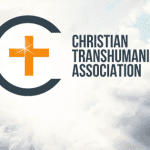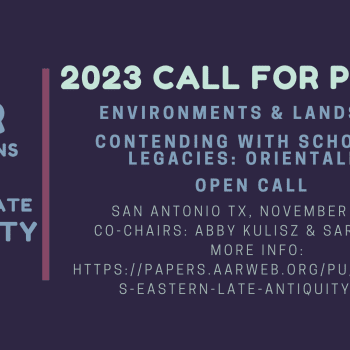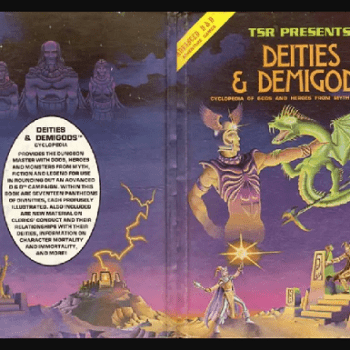This call for papers came to my attention and I thought it would be worth sharing here:
J.R.R. Tolkien and the Works of Joss Whedon
Special Issue of the Journal of Tolkien Research https://scholar.valpo.edu/journaloftolkienresearch/
Co-edited by Janet Brennan Croft and Kristine Larsen
[email protected]; [email protected]
Connections between any of the works of both creative geniuses are fair game for this interdisciplinary volume. Some possible topics include: world-building, horror and the monstrous, critiques of heroism, women’s roles, Buffy-speak and elf-speak, and villainous motivations.
- Please submit a 250-300 word abstract and a brief bio to both of the co-editors by August 4, 2019. Conference papers that have been presented are especially encouraged, so long as they have not been published. You may submit the entire conference paper for consideration instead of an abstract. It is understood that conference papers will need to be expanded to journal length articles (approximately 4000-7000 words). We will be using the Mythlore citation style (available at https://dc.swosu.edu/mythlore/styleguide.html).
- Abstracts/conference papers accepted to be expanded to journal length papers will be required to be returned in completed first draft stage by December 15, 2019.
- Note: Final acceptance of your paper for inclusion in this special themed issue of the journal will be determined by the journal’s peer review process (after all edits are made by the issue co-editors).
Another made a direct reference to C. S. Lewis’ Narnia stories, and so seemed fitting to include here alongside the other:
Call for Papers
Threshold, Boundary, and Crossover in Fantasy
Organised by Alex Gushurst-Moore, Mariam Hale, and Jun Qiang (PhD Students at the University of York)
As part of the York Fantasy Discussion Group
To be held in York 12th-13th March 2020
Keynote speakers: Professor George P. Landow (Emeritus Professor, Brown) and
Dr Rob Maslen (University of Glasgow)
‘There was nothing Lucy liked so much as the smell and feel of fur. She immediately stepped into the wardrobe and got in among the coats and rubbed her face against them, leaving the door open, of course, because she knew that it is very foolish to shut oneself into any wardrobe. Soon she went further in and found that there was a second row of coats hanging up behind the first one. It was almost quite dark in there and she kept her arms stretched out in front of her so as not to bump her face into the back of the wardrobe. She took a step further in – then two or three steps – always expecting to feel woodwork against the tips of her fingers. But she could not feel it.’ – C.S. Lewis, The Lion, the Witch and the Wardrobe, first published in 1950.
We invite proposals for 20-minute papers on the subject of ‘threshold, boundary, and crossover’ in fantasy. Creative interpretation of the theme is encouraged, and particular precedence will be given to papers looking at interdisciplinarity in fantasy studies. We wish to push the limits of how we interpret and understand fantasy as a categorical term, interrogating the idea put forward by art historian Walter Schurian that ‘the fantastic can also be found in other fields of art, such as literature, architecture, music and film; fantastical tendencies and currents can even be observed in the natural sciences, for example in the form of unusual, chance opinions and theories.’ As such, we welcome papers from scholars working in any field or discipline. Some thematic prompts include:
Interdisciplinarity
Intertextuality
Cross-cultural exchange
International exchange
National fantasies
Gender
Selfhood, self and other
Children/ YA/ Adult
Journey, pilgrimage, passage
Ancient/ Medieval/ Modern
Between worlds
Frames, framing devices and literal thresholds
Hermeticism
Retellings
Portals and transportation
Genre, categorisation, classification
Ideas of here and there
Fin-de-siècle
Youth and age
Fantasy and science fiction
To submit a proposal, please send (in one document) a biography of c. 100 words and a paper abstract of no more than 400 words to [email protected] by September 13th 2019. Queries can be directed to this email address also.
And finally, here’s one more call for papers focused on fantasy:
Conference, University of Southern Denmark, May 28–29, 2020
Utopia & Dystopia
Conference on the Fantastic in Media Entertainment
Venue: University of Southern Denmark, Odense, Denmark Proposal Deadline: December 10, 2019
Call for Presentations
Today, genres of the fantastic reign supreme in all media entertainment – film, television, games, toys, theme parks, haunted houses. We are surrounded by superheroes, fantastic beasts, and battles in dystopian futures. Intriguingly, the more secularized societies become, the more infatuated we are with the fantastic. In terms of revenue and fan interest, fantastic genres are the most popular the world over. The Shape of Water (2017), an adult fairy tale, won four Oscars. The Star Wars trilogy (2015–), Wonder Woman (2017), and Captain Marvel (2019) feature female protagonists, a recent development. Black Panther (2017) featured an African-American protagonist. And shows like The Walking Dead (2011–) and Game of Thrones (2011–2019) have made adult fantastic television the new black. The fantastic, once considered for children, has become respected for its ability to break existing limits and imagine the impossible and the unknown.
This conference invites new research in the fantastic. Why is the fantastic more popular than ever? What theories – or bundle of theories – capture the specific nature of the fantastic? What purposes do fantastic genres serve in terms of evolution, adaptation, sensory pleasures, and cognitive as well as social uses? How do we create fantastic stories across media platforms and in different aesthetic forms? How is worldbuilding used to create transmedia stories of the fantastic? How do new technologies and media aesthetics affect the fantastic in terms of production, distribution, and fan uses?
The conference welcomes multiple theoretical approaches and perspectives. The aim is to understand the use, function, and role of the fantastic today; to engage with its various expressions across media; and to ask what powers and appeal all its genres hold, from fantasy and fairy tales to science fiction and supernatural horror. We believe the fantastic is especially suited to ask questions about human existence, pressing questions in times of today’s ecological crisis, and with this call we want to ask those questions.
Greek phantastikos means producing mental images, and the OED defines fantastic as “existing only in imagination . . . fabulous, imaginary, unreal.” But the fantastic has been defined multiple ways. A broad definition sees it a supergenre with subgenres that break with the laws of nature: sci- fi, fantasy, fairy tale, supernatural horror, and superheroes. A narrow definition targets singular elements, for example a reader’s hesitation between a natural or a supernatural explanation of events (Todorov). We use a broad definition of the fantastic and welcome paper proposals on all subgenres of the fantastic and its expressions in practice, film, tv, games, digital media, theme parks, haunted houses, fan studies, and more.
Suggested Themes
• Play and the fantastic
• Cognitive and evolutionary approaches to the fantastic
• The fantastic as live entertainment (haunted attractions such as haunted houses, escape
rooms, zombie runs)
• Genre mashup and new mixing
• The precariat in the fantastic
• Women in the fantastic
• Indigenous fantastic
• Transnational and global fantastic
• Fantastic beasts – imaginary animals in the fantastic
• Auteurs in the fantastic
• Fan tourism and the fantastic
• Designing and creating fantastic spaces
• Subgenres of the fantastic – all subgenres are welcome
Keynotes Speakers – More Keynote Speakers to be Announced
Professor Cristina Bacchilega, University of Hawai‘i at Mānoa Professor Angela Ndalianis, Swinburne University of Technology
We invite submissions of research papers of 20 minutes as well as pre–constituted panels of three or four people. Proposals of 300 words and 150 word bio should be sent to Rikke Schubart, [email protected] by December 10, 2019, as should any queries.
Conference Steering Committee
Ass. Prof. Rikke Schubart, University of Southern Denmark, [email protected]
Ass. Prof. Anita Nell Bech Albertsen, University of Southern Denmark, [email protected]
Ass. Prof. Rune Graulund, University of Southern Denmark, [email protected]
Professor Cristina Bacchilega, University of Hawai‘i at Mānoa, [email protected] Professor Angela Ndalianis, Swinburne University of Technology, [email protected]
The conference is arranged by the Institute for the Study of Culture, SDU, and Danish IRFD research network Imagining the impossible: The Fantastic as Media Entertainment and Play
https://relcfp.tumblr.com/post/186291766096/jrr-tolkien-and-the-works-of-joss-whedon-acrel
CFP: Threshold, Boundary, and Crossover in Fantasy, York 12th-13th March 2020
Finally, a few related links, including a glimpse of J. R. R. Tolkien’s house, courtesy of Steve Wiggins.
https://www.tor.com/2019/05/30/exploring-the-people-of-middle-earth-sauron-craftsman-ring-giver-and-dark-lord/













